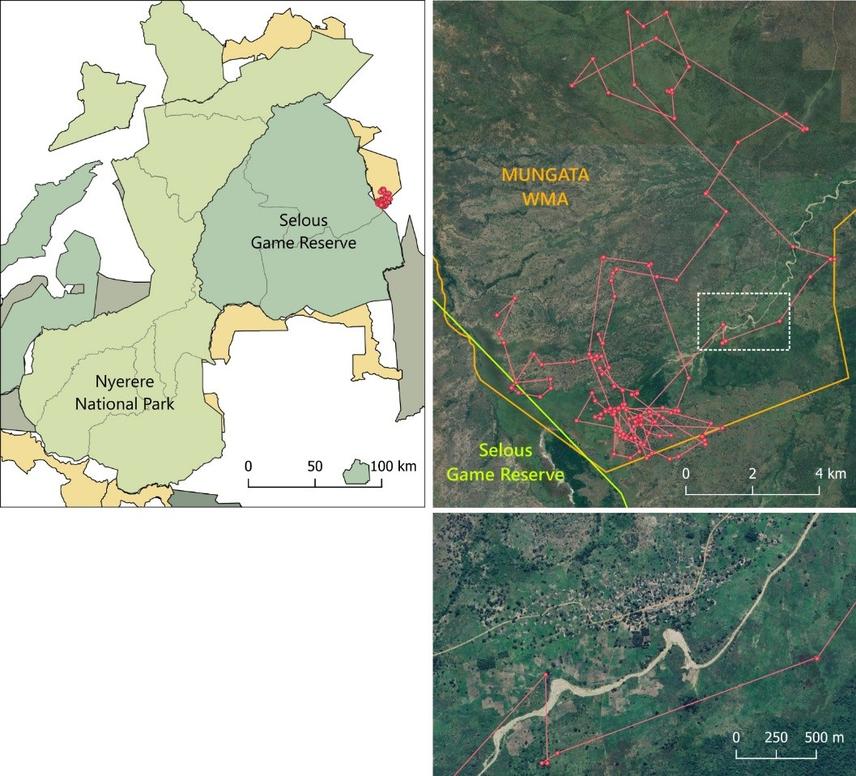Leonard Haule
This project seeks to understand human-carnivore interactions in Wildlife Management Areas (WMAs) forming the buffer zones of the core Selous-Nyerere protected area in southern Tanzania. These zones are key interfaces where human activities overlap with core habitats for threatened large carnivores, including African wild dogs (Lycaon pictus), lions (Panthera leo), leopards (Panthera pardus), and spotted hyenas (Crocuta crocuta).

Movement of a collared lion from the Eastern boundary of Selous Game Reserve to MUNGATA WMA (c) Lion Landscapes
The study recognizes the conservation importance of these buffer areas as dispersal corridors and their role in maintaining connectivity between populations across protected areas. However, increasing anthropogenic pressures from livestock grazing, land conversion, and retaliatory killings, threaten both carnivore population viability and local livelihoods.
Building on prior work in the core Selous-Nyerere landscape, where GPS-collared lions and wild dogs frequently moved into adjacent WMAs, especially on the eastern boundaries, this study adopts a multidisciplinary approach to examine how local communities perceive and manage their interactions with large carnivores. It combines ecological and social approaches using household surveys, focus group discussions, and participatory mapping to document local experiences, traditional knowledge, and resource management practices. GIS analysis will integrate these data to identify spatial patterns of interactions and conflicts, therefore informing targeted mitigation efforts.
The study will co-develop, with local stakeholders, locally grounded co-existence strategies. Proposed interventions will be tested and refined based on community feedback to ensure relevance and adoption. By integrating traditional ecological knowledge with scientific methods, the study will foster coexistence and strengthen community led conservation in the buffer zones. This will contribute directly to safeguarding threatened large carnivores while supporting sustainable livelihoods, aligning with global conservation priorities for species. By emphasizing community ownership, traditional practices, and collaboration with conservation authorities, the approach lays a foundation for long-term impact.